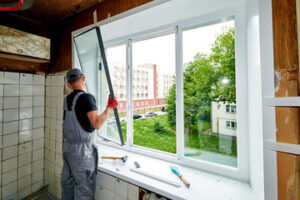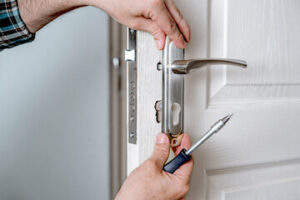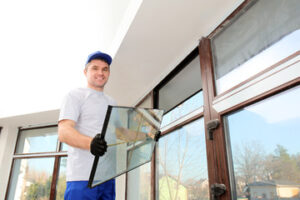Replacement Windows Georgetown TX in your home is an important investment, so you want to make sure you get it right. The right window can boost your home’s comfort, make it look better, and even increase its value on the market when you decide to sell.

Energy-efficient replacement windows help shut out outside noises like traffic and lawnmowers to create a more serene living environment inside your home. They also reduce harmful UV rays that cause furniture and carpets to fade.
Energy efficiency is one of the most important factors homeowners should consider when choosing replacement windows. Energy efficient options are designed to keep homes cooler in the summer and warmer in the winter, reducing the workload on heating and cooling systems. These window solutions are also able to reduce drafts, which can make for a more comfortable and pleasant living space.
With the right window choice, homeowners can expect to see significant savings on their utility bills. A good place to start when shopping for replacement windows with improved energy efficiency is to look for a ENERGY STAR label. This label is provided by the federal government and it helps consumers choose windows that are more environmentally friendly and efficient than a standard option.
Homeowners should consider the type of frame, glazing and insulation when choosing a new window. Window frames come in a variety of materials, and each offers different benefits with regard to durability, aesthetics and energy efficiency. For example, a wood frame is often more durable and visually appealing than a vinyl or aluminum-clad window. Many window manufacturers also offer window options that combine wood interiors with vinyl- or aluminum-clad exteriors, providing the best of both worlds in terms of appearance and performance.
When examining replacement windows, homeowners should also pay attention to the U-factor and solar heat gain coefficient (SHGC). These ratings are provided by the National Fenestration Rating Council and they help consumers understand the performance of a window in terms of its ability to reduce energy consumption, maintain temperature control and prevent outside noise pollution.
Another factor to consider is the fact that new replacement windows are more durable than older windows and require minimal maintenance and repair. They are also better at preventing moisture and mold buildup.
In addition to lowering utility costs and improving comfort, energy-efficient replacement windows can enhance the overall value of a home. If you are considering replacing your current windows with energy-efficient options, be sure to consult with a professional installer who has a strong reputation in the industry.
In addition to increasing the overall value of your home, new replacement windows can add a lot to your family’s quality of life. They can reduce drafts and noise from the street, while boosting your home’s security by ensuring that the windows always close properly.
Increased Curb Appeal
Windows are one of the most visible parts of your home’s exterior and can have a dramatic impact on its curb appeal. If your windows are old, outdated or damaged, replacement windows can instantly give your home a refreshed look. In fact, according to Remodeling magazine, window replacement is one of the top eight projects homeowners can take on to improve their home’s value.
New windows can make your house look brighter, cleaner and more inviting. And since there are many different window styles and options to choose from, you can find a solution that complements your home’s architectural style. From double-hung windows for a classic look to sliding windows that offer ease of cleaning and unobstructed views to casement windows that add a touch of European elegance, there is something for every home.
If your home’s existing window frame and cladding are in good shape, you may want to consider a pocket replacement window rather than a full-frame replacement. This type of installation is less invasive because it involves inserting the new window into the original frame and does not require a removal of siding, trim or other components surrounding the existing window.
When installed properly, energy-efficient replacement windows can reduce outside noise pollution. This can help you sleep better and work more productively without being disturbed by the sounds of your neighbors’ lawn mowers or children playing in the backyard.
In addition to reducing outside noise, energy-efficient replacement windows can also provide a more peaceful indoor atmosphere. This is because they are designed to maintain your home’s temperature more effectively and reduce air leakage. In turn, this helps you save money on heating and cooling costs.
Reduced Noise Pollution
Noise pollution can be a serious problem that impacts both physical and mental well-being, with studies showing that it can cause fatigue, stress, and even depression. Fortunately, there are many effective ways to reduce the amount of outside noise that enters your home, including the installation of replacement windows. Replacement windows can significantly cut down on traffic and neighborhood sounds, creating a more peaceful indoor environment. This is especially helpful for those who work from home or have children or pets that need a quiet space to rest or play.
The type of glazing used in replacement windows plays a significant role in their ability to reduce noise pollution. Double- and triple-pane windows are more effective than single-pane windows, as they are designed to reduce noise by preventing sound waves from passing through. The spaces between the glass panes in these windows are often filled with an inert gas, such as argon or krypton, which acts as a powerful insulator that helps to block out noise. Additionally, the thickness of the glass can vary between the panes, which further enhances their noise-reducing capabilities.
Additionally, the frame of a replacement window can also be constructed from thicker materials that help to reduce noise pollution. For example, some newer frames are constructed from fiberglass composites, which offer superior sound-reduction properties. This is because the composite material is a dense, strong material that absorbs and reduces noise more effectively than traditional wood or aluminum frame constructions.
Other modern features that can help to reduce noise include laminated glass and improved window seals. These features can help to prevent air leaks, which can allow outside noises to enter your home. They can also reduce the vibrations caused by exterior traffic or other outside sounds, which can cause disturbing echoes inside your home.
By carefully assessing your needs, consulting with experts, and choosing windows with high STC ratings, you can greatly minimize the amount of noise pollution entering your home in Northern Delaware. In addition, proper installation can ensure that the windows close and latch properly, preventing gaps that can let in loud noises.
Increased Home Value
If you’re thinking about selling your house in the future, then replacement windows are a great way to increase your home value. Potential buyers will want to buy a house that is comfortable and energy efficient, so they’ll be willing to pay more for a house with new windows than one that has old, drafty ones. In addition, replacement windows can help to give your house a fresh look that will appeal to buyers and make it more likely to sell quickly.
It’s important to note that while replacing your windows will increase the value of your home, it’s not a guaranteed return on investment. This is because the exact amount of money that you’ll recoup will depend on a variety of factors, including the type and number of replacement windows that you install and your local housing market. However, many experts agree that on average, homeowners can expect to recoup about 69% of the cost of their new replacement windows.
Not only do replacement windows add a sense of style to your home, but they can also provide additional curb appeal that can boost your home’s value. This is especially true if you choose windows that are a good fit for your style and complement the architectural features of your home. For example, if your home has bay or bow windows, they can add dimension to your space and draw attention to particular focal points in the room.
Finally, you can use replacement windows to enhance the natural light in your home, which is another major selling point for prospective buyers. This can make your home more inviting and boost your mood. Additionally, natural light can help to reduce the amount of time that you spend on indoor chores like cleaning and cooking.
Overall, replacement windows can have a significant impact on your home’s value. They can help to increase energy efficiency, improve your curb appeal, and add a sense of style and functionality.



